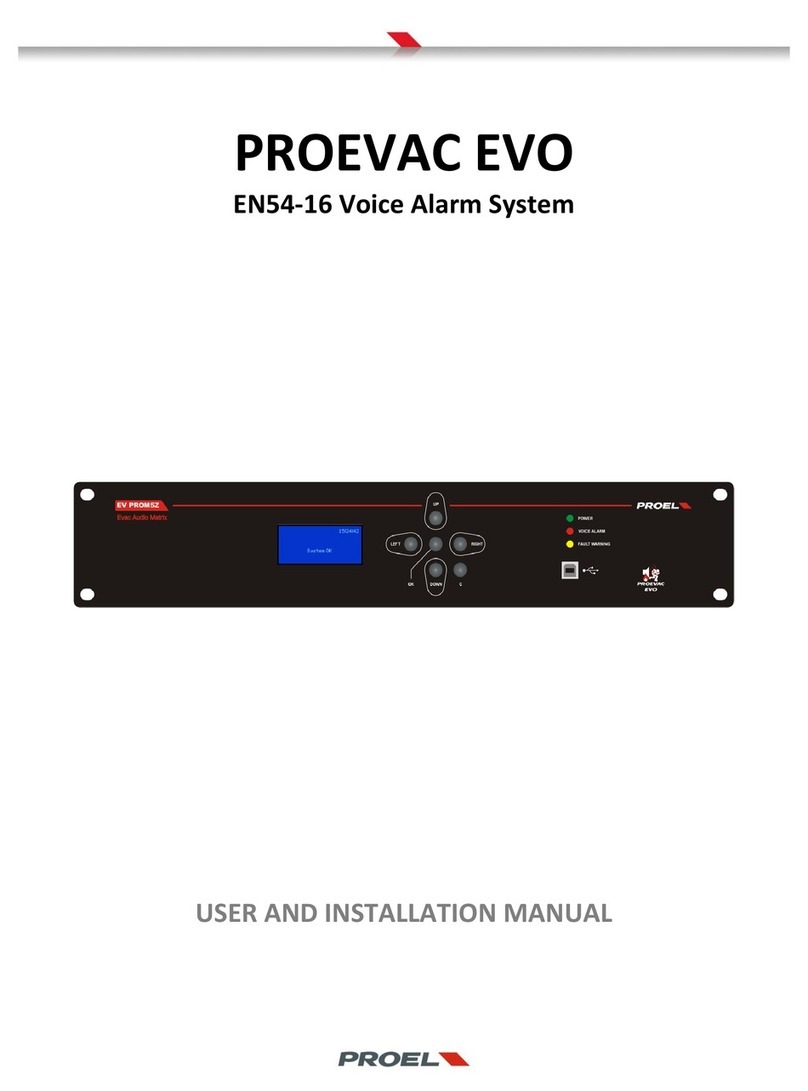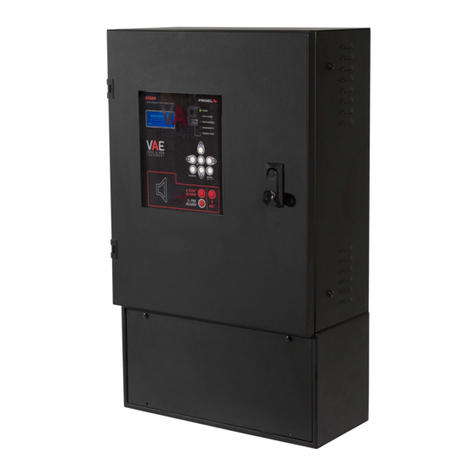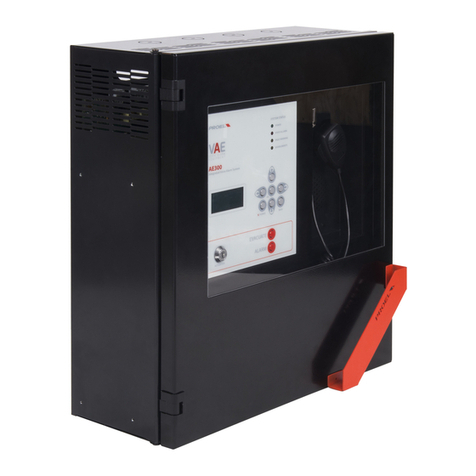6
SYSTEM FUNCTION PRINCIPALS
LINE DIAGNOSTIC
PRO EVAC system is a modular system, for each line there is a zone card to be inserted in the
commutation unit
Diagnostic system inserts in the amplifying chain at regular interval of 1” an unheard pilot tone of
22 KHz. At the amplifier output and at end line loudspeaker, the tone pilot survey is done in a
constant way. In case of this pilot tone absence, the system acts as follows:
1) Tone pilot absence from the amplifier output ( amplifier default) .
− The default indicator on the commutation unit display is switched on
− Main unit default sound signal activation( buzzer).
− Main unit and microphone stands display amplifier default.
− The event is memorised in event log memory and in eventual print purposes when
available.
− Loudspeakers line commutation to back up amplifier – if back up amplifier available-
2) Tone pilot absence at end loudspeakers line (Line default).
− The default indicator of the commutation unit front panel is switched on.
− Main unit default sound signal activation (buzzer).
− Main unit and microphone stands display line default .
− The event is memorized in event log memory and in eventual (when available) print
purposes .
BACK UP AMPLIFIER
PRO EVAC system is designed to connect one or two back up amplifiers to each commutation unit
When only one spare amplifier is connected (SPLIT OFF) all zones modules inserted in the
commutation unit – in case of default- commute audio input and loudspeakers line to the same
amplifier. Statistically it is improbable that two amplifiers are in default contemporaneously. But to
remedy it is necessary to define the back up amplifier to ensure the zones/line necessary power
connect 100V output to terminal BCK 1 OUT and bridge BCK 1 OUT with BCK 2 OUT.
To ensure a good power repartition – in case of amplifier default- it is possible to connect 2 back
up amplifiers (SPLIT ON). In this case the commutation unit is subdivided in 2 groups s of modules
In case of zone 1 to.. 4 amplifier default the loudspeakers lines will be commuted to the first spare
amplifier . In case of zone 5 to ..8 amplifier default , the loudspeakers line will be connected to the
second spare amplifier.
It is necessary to foresee at least one back up amplifier for each commutation unit installed.
It is necessary to reset the system – accordingly to EN 60849 rules- and because the default signal
persists- even if the operating continuity is ensured because the loudspeakers line are connected
to back up amplifier .
The zones modules survey the amplifier default and commute to the back up amplifier, but are not
considered by programming purposes. Zones modules are involved only by general or non
selective call.
































